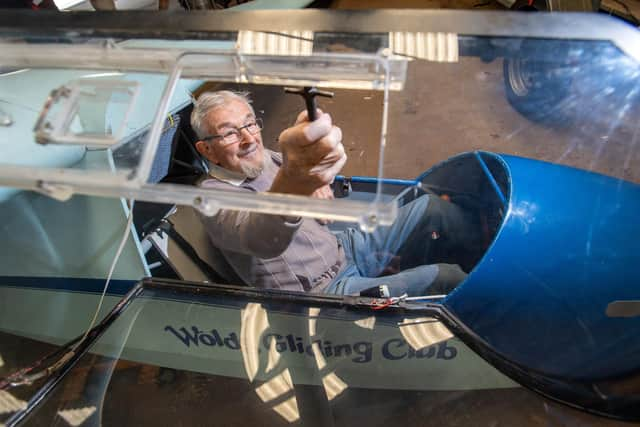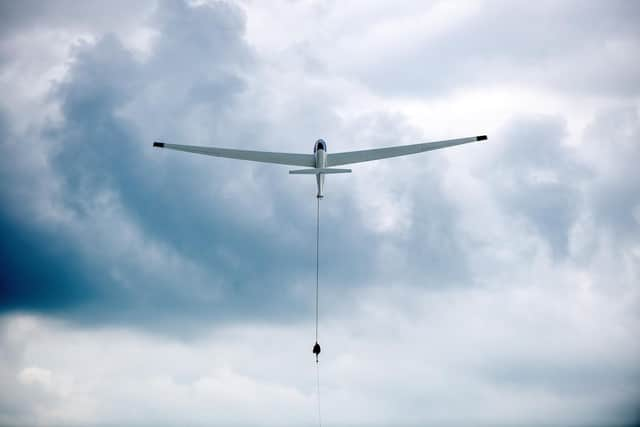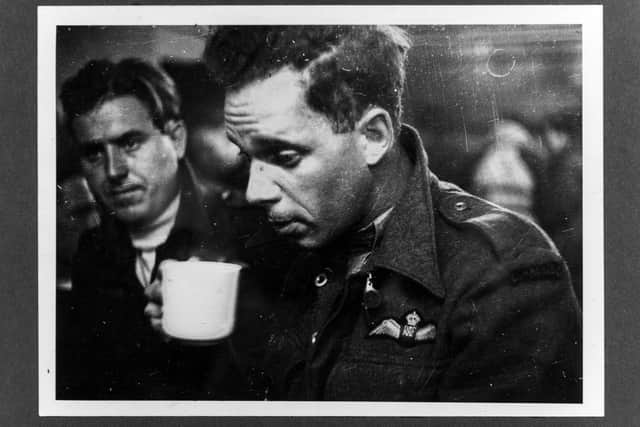Wolds Gliding Club: How local wildlife come in handy for pilots looking to catch a thermal
But it still comes as a surprise that so much can be done without an engine – on a single tow a glider can travel hundreds of miles.
Up 2,000ft above East Yorkshire, the aircraft moves soundlessly, effortlessly, forward, above a patchwork of yellow and green fields, circling across the thread of a canal, with a grey Humber in the distance and York under a dark cloud.
Advertisement
Hide AdAdvertisement
Hide AdRain has just passed through and without any thermals to keep it rising, the glider continues on a slow descent back to Pocklington Airfield.


Here 130 past and present members of Wolds Gliding Club are meeting on Saturday from all over the country to mark the 50th anniversary of the club’s move to the East Yorkshire town with a social event.
Close to where Wellington and Halifax bombers landed after dangerous raids in the Second World War on Germany, the glider trundles to a halt.
A golf cart tows it back to its parking spot with the help of a steadying hand.
Advertisement
Hide AdAdvertisement
Hide AdBack at air traffic control – a bus next to the runway – six members wait their turn to go. Everybody mucks in.


Founding member Bob Fox says learning to fly a glider is less expensive and easier than people may think.
Lots of flyers go off and join the RAF and become commercial pilots – they have one member currently training to fly 737s.
Launch by winch which yanks the glider into the sky at 45 degrees from a 1km long cable costs just £8.50 a pop and will take you up to 1,000ft.
Advertisement
Hide AdAdvertisement
Hide AdMr Fox said: “If you can ride a bike you can fly a glider – some people take longer than others but nearly everybody goes solo eventually.


“You can learn to fly quite easily by doing three winch launches a week – it’s actually quite an economic way to learn how to fly.”
If you can catch the right thermals –using the clouds which act “a bit like lava lamps” as stepping stones you can go far.
The local wildlife, red kites and buzzards, which sometimes swoop at the gliders when they are all in a thermal together, are useful guides.
Advertisement
Hide AdAdvertisement
Hide Ad“As long as there’s sun on the ground you can keep going,” added Mr Fox.


“We had one chap who flew from here to Cambridge and Bicester and back, some 750km, which will have taken six or seven hours.”
However, there’s always a chance that you may end up unexpectedly coming down in a farmer’s field on a Saturday night.
It’s a hobby which can continue well into retirement – member Eddie Room, 93, has been flying for 63 years and says it’s what keeps him going.
Advertisement
Hide AdAdvertisement
Hide AdHe said: “We were flying open cockpit two-seaters – they’ve advanced since then.”
Mr Fox added: “You have to use your wits, you are thinking half a dozen things at the same time. If the weather turns you just land in a field.”
Thanks to all the housing estates springing up in the area – and a “commuted sum” handed over by developers – the club was recently awarded a generous £117,000 grant from
Pocklington Town Council towards one of two new craft they have on order.
Advertisement
Hide AdAdvertisement
Hide AdAnd the club is keen to let people know there’s plenty of capacity for new members.
Wolds Gliding club may be one of the biggest in the country, attracting hundreds of visitors to the area every year, but even locals don’t always realise it is on their doorsteps.
Originally formed in the mid-60s, the club led a nomadic lifestyle as Leeds City Council Transport Sports and Social Club Gliding Section before settling at its permanent base at Pocklington in 1971.
In 1972 it was renamed as Wolds Gliding Club.
It has 160 members, 45 gliders and an active junior gliding programme that has recently been re-accredited by the British Gliding Association.
Advertisement
Hide AdAdvertisement
Hide AdAlthough gliders were used to develop aviation as far back as the mid 19th century, gliding as a sport only began in the 1920s.
It was Germany that pioneered gliding because of severe restrictions imposed by the Treaty of Versailles, while other countries focused their attentions on powered craft.
And Germany is still the biggest manufacturer of gliders in the world
Gliding was meant to become a full Olympic sport in the 1940 Games – but the Second World War intervened.
Advertisement
Hide AdAdvertisement
Hide AdMaking it an Olympic sport again has been mooted since then – but rejected apparently on the grounds of a lack of public interest.
The air above Pocklington will be alive with gliding action between August 21 and 28, for a national two-seater gliding competition.
Visitors are welcome to go along and watch.
Comment Guidelines
National World encourages reader discussion on our stories. User feedback, insights and back-and-forth exchanges add a rich layer of context to reporting. Please review our Community Guidelines before commenting.